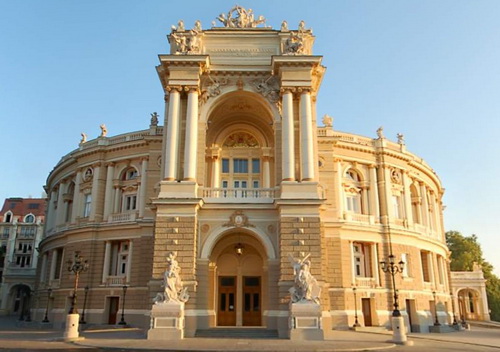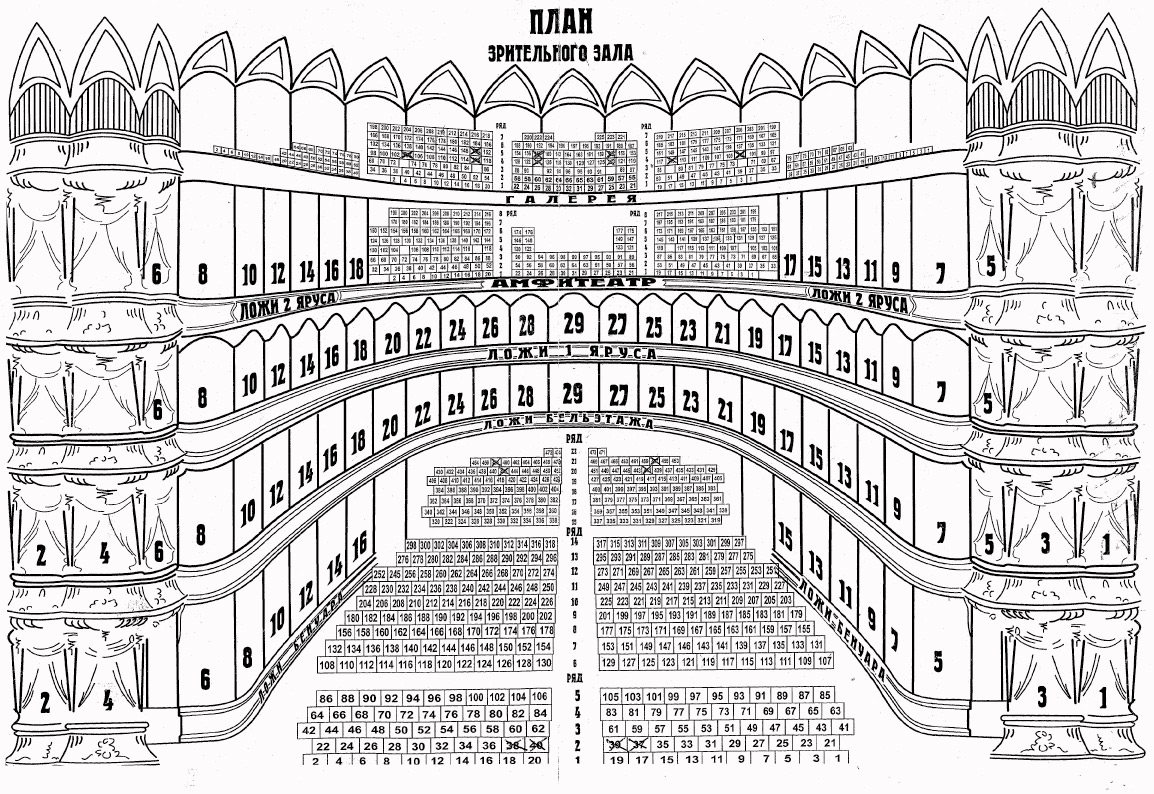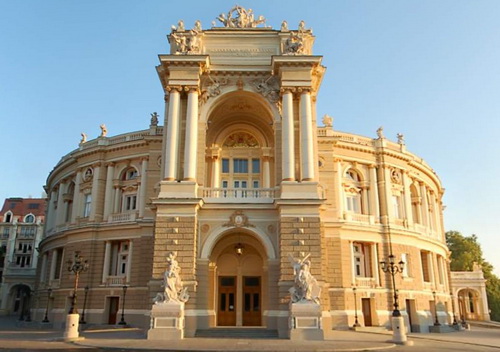NATIONAL ACADEMIC OPERA AND BALLET THEATER OF ODESSA

Address: Chaikovskiy lane, 1
Phone numbers:
Buses: № 9, 117, 137, 145, 175, 220а, 221, 223
Trolleybuses: № 1, 9
Opening time: cashboxes 11:00 - 19:00, Monday - closed
Prices: from 50 UAH to 200 UAH
Play start at 12:00 and at 18:30
Tickets are on sale 10 days before the play
Preschool children on evening performances are not allowed.
In the theater the audience is not allowed wearing the sports and beachwear, shorts, T-shirts and flip flops.
From the history of the theater:
The building of the first theater in Odessa was designed by the famous Petersburg architect Thomas de Tomona and opened in February 10, 1810. It was like a snow-white structure of an ancient temple, facing the facade to the port. The hall had 800 seats (at that time there lived 12,500 people in the town).The name "opera" appeared in the XX century, and the first theater was called the City one. On its stage were famous opera singers, the imperial and royal houses troupes.
64 years after the opening the city theater was completely destroyed by fire. The construction of the new one was commissioned to Vienna architects Ferdinand Fellner and Herman Helmer, who created a theater in Vienna, Budapest, Dresden and other European cities. The project by Fellner and Helmer was not worked out in detail, and the architects themselves did not come to Odessa during the construction. Therefore, much was revised and improved by local architects Felix Gonsirovsky, Alexander Bernardazzi Dimitrenko and Yuri Dimitrenko .
The theater was commissioned in September 15, 1887, and it was opened in October 1, 1887. It was the first in the Novorossiysk Territory building equipped with electricity and steam heating.
At the theater Enrico Caruso, Feodor Chaliapin, Leonid Sobinov, Salome Krushelnitskaya, Antonina Nezhdanova sang. Anna Pavlova, Isadora Duncan, Catherine Geltser danced. Sergei Rachmaninoff and Alexander Scriabin concerted. Dramatic actress Sarah Bernhardt and Eleonora Duse, Italian tragedian Ernesto Rossi played. The orchestra was conducted by Pyotr Tchaikovsky and Nikolai Rimsky-Korsakov, Anton Rubinstein and Eduard Napravnik, Anton Arensky, Alexander Glazunov and many others.
The second major fire occurred at the Odessa Opera House in March 15, 1925 after the opera by Giacomo Meyerbeer The Prophet because of careless handling of fire. The fire damaged the hall, destroyed the stage, sets, costumes, hit musical library and a curtain on which the artist François Lafleur depicted a scene from Ruslan and Lyudmila. But a year later performances in the theater were resumed, the stage was given a new technical equipment with two reinforced concrete curtain which, when necessary, cut off the stage from the auditorium and office space. New decorative curtain was made from sketches of the famous theater artist Alexander Golovin.
After the October Revolution, the Odessa theater became a state one, and in 1926 it received the academic status.
In 1944, the theater miraculously survived: the Nazis were planning to blow it up during the retreat. But on April 10 the Soviet flag was posted on the balcony of the building, a symbol of Odessa liberation from Nazi invaders. During the renovation of the theater 1996 - 2007 Opera Theatre troupe gave performances at stages of the operating theaters in Odessa, performed at international festivals in different countries.In 2007, the opening day after reconstruction, Odessa Academic Opera and Ballet Theatre was awarded the status of the national one.
About the architecture:
There are elements of the Italian Renaissance and the Viennese baroque, classical baroque and rococo in the design of the facade and the interior of the theater, but all styles are organically connected and create a coherent composition.
The front side of the theater is made in the style of Viennese baroque. On the facade stands a group of sculptures depicting the patron of theatrical art muse Melpomene in a chariot drawn by four furious panthers (allegory: the power of art can only win bestial savagery).
The portico is crowned with two sculptures that embody the music and dance, on the left Orpheus plays the cittern centaur, on the right the muse of dance Terpsichore teaches a girl her art. On the pediment of the portico there are a few dates in Roman numerals: the first line MDCCCLXXXIV-MDCCCLXXXVII - the years of the start and end of the construction of the theater (1884-1887). The second line contains the phrase «ardebat anno», which means "theater burned" (we are talking about a fire in 1925). Then the date MCMLXVII (1967) and the word «restitutum» («recovery») as a reminder of the restoration work in the theater.
The central entrance to the theater is decorated with molded embodiments of comedy and tragedy. On the left there is an episode of the tragedy of Euripides entitled Hippolytus, on the right an episode of the comedy of Aristophanes called Birds. On the balustrade of the building there are 16 figures of putti (babies, cupids), each of which is unique and does not repeat the rest.
In the circular recesses on the top floor of the pediment of the building we see the busts of great Russian authors such as Alexander Pushkin, Aleksandr Griboyedov, Gogol and Mikhail Glinka. They embody the poetry, drama, comedy and music.
The auditorium of the Odessa Opera House is decorated in the style of the late French Rococo decorated with stucco ornaments with the finest gold. The main motive is a shell in the form of curls of different shapes. Figure ornaments are never repeated.
Dome light is divided into four segments, the medallion painted by artist Francois Leffler. They depict scenes from the works of Shakespeare Hamlet, Midsummer Night's Dream, Winter Tale and As You Like It. In the center there is a large chandelier that affects the abundance of grace and tracery details. The first stage curtain was painted as Francois Leffler and depicts a scene from the play Ruslan and Lyudmila.
The current technical equipment meets the latest requirements. This includes air conditioning, automatic directorial control, electronic art lighting control with programmable cybernetic installation, computer-controlled motion scenes, a complex system of fire support. Placing chairs in the hall exclude the presence of so-called "blind spots", and a great acoustic can convey to the audience even a whisper from the stage.



